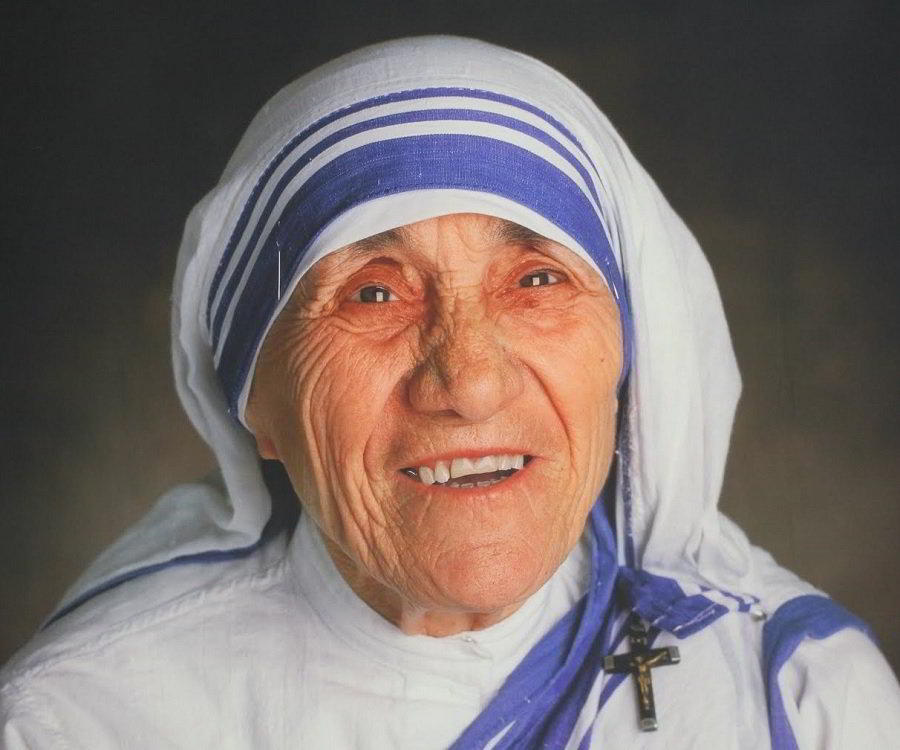Mother Teresa
Achievements:
- 928: Leaves home for Dublin, Ireland, to become a Loretto nun. She takes the name sister Teresa
- 1929: Arrives in Calcutta, India and joins St Mary’s High school to teach.
- 24 May 1937: Takes final vows as a nun in Darjeeling
- 1947: Most important journey of her life to Darjeeling where she receives a call from Jesus to serve him among the poorest of poor and to live with them
- 1948: Opens first slum school in Calcutta.
- 1950: Missionaries of Charity established.
- 1952: Opens Nirmal Hriday, or Pure heart, a home for dying
- 1962: Receives the Padma Shri award for distinguished service — her first award for her humanitarian work
- 1971: Pope John Paul VI awards Mother peace prize
- 1979: Awarded the Nobel Peace Prize
- 1980: Awarded India’s highest civilian honor Bharat Ratna.
- 1983: Has a heart attack while in Rome visiting Pope John Paul II
- 1983: Queen Elizabeth II awarded Order of Merit in New Delhi
- 1985: Gets Medal of Freedom, the highest US civilian award
Turning Points:
- 1986: Narrow escape in an air crash in Tanzania
- 1989: Suffers second heart attack; doctors implant pacemaker
- 1990: Wants to relinquish charge of Missionaries of Charity on account of poor health. But she is re-elected with only one dissenting vote — her own.
- 1991: Suffers pneumonia in Mexico, and undergoes heart surgery in the United States.
- 1993: Breaks three ribs in fall in Rome
- 1993: Another surgery in Calcutta to clear a blocked heart vessel
- 1996: Fractures her left collar bone and is hospitalized
- 22 August 1996: Suffers heart failure, admitted to Calcutta’s Woodlands Nursing Home
- 16 September 1996: Injures head in fall while getting out of bed; doctors detect spot on brain
- 16 November 1996: Granted honorary American citizenship
